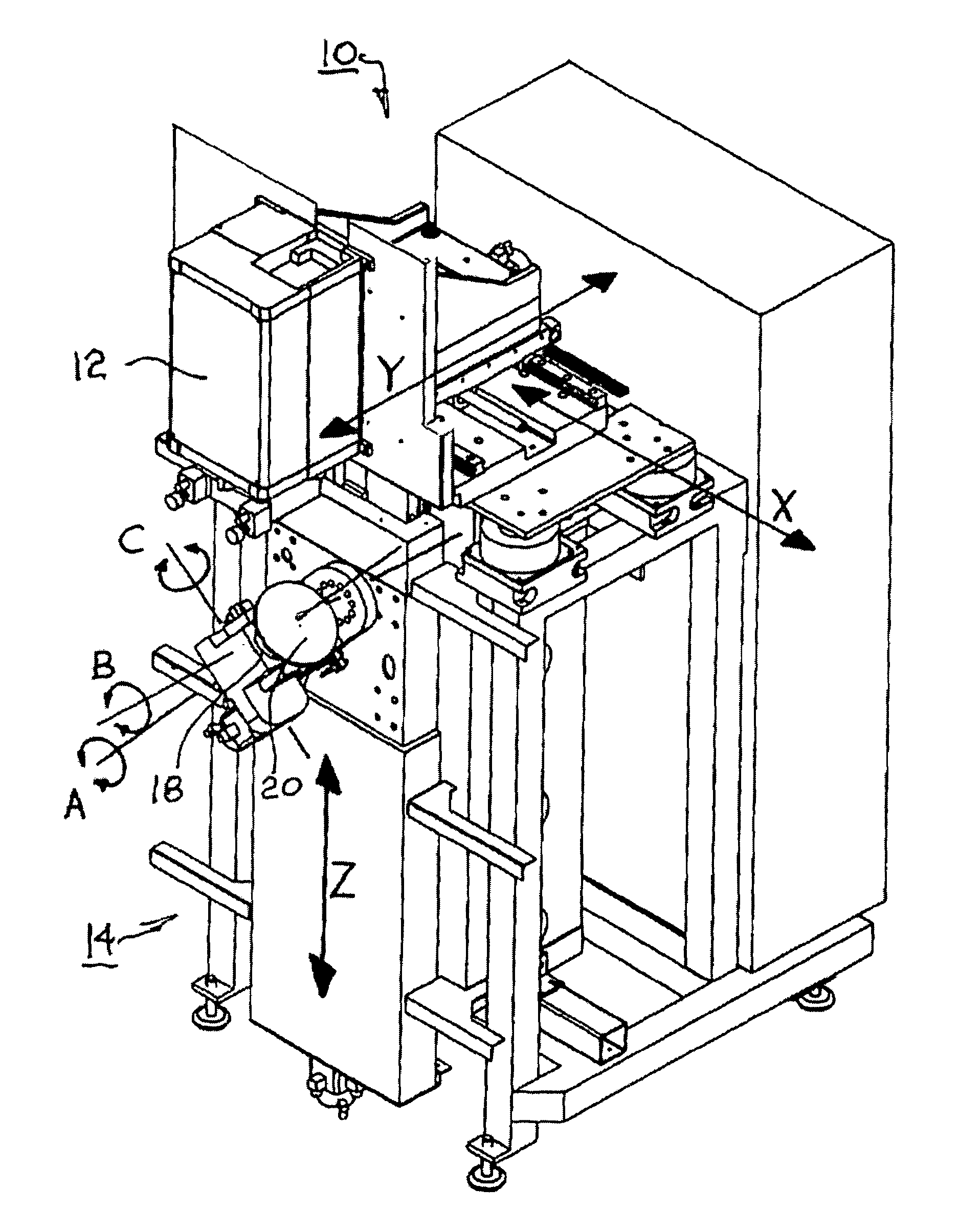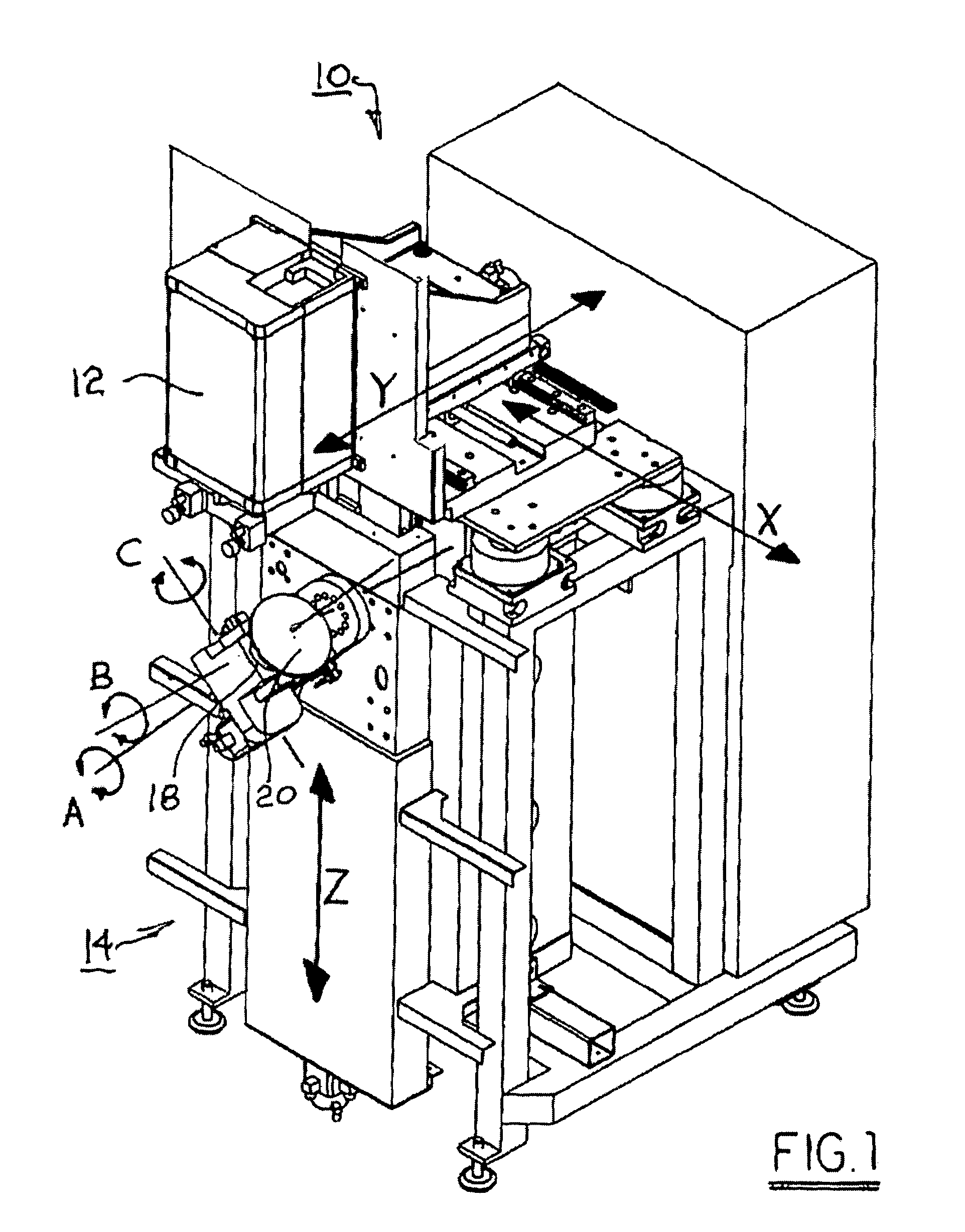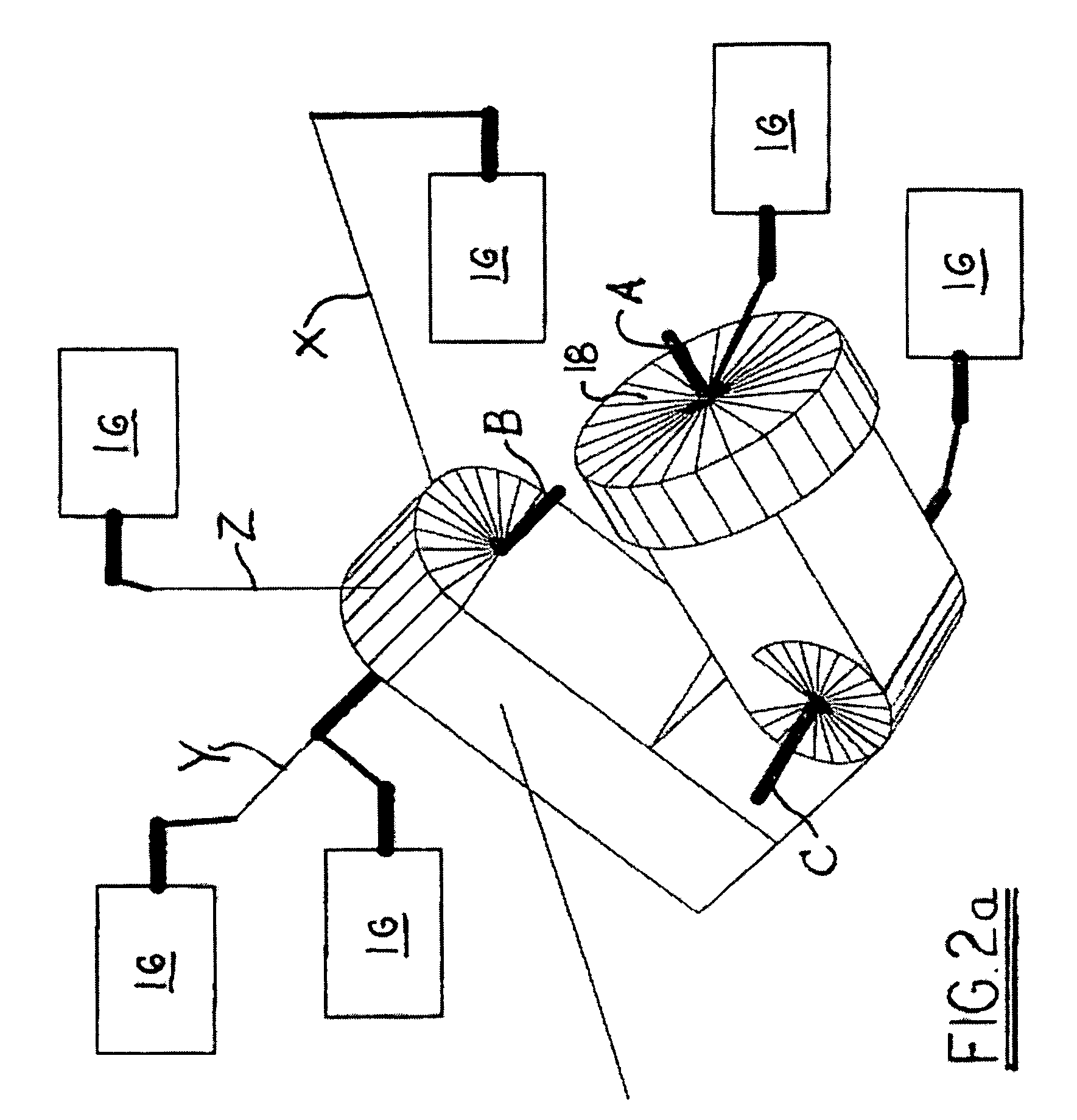Method for accurate high-resolution measurements of aspheric surfaces
a measurement method and high-resolution technology, applied in the direction of optical apparatus testing, optical radiation measurement, instruments, etc., can solve the problems of ineffective pure random average, inapplicability of spherical null test configuration to aspheric non-null test, etc., to improve the measurement accuracy of a metrology system and reduce the effect of uncalibrated errors
- Summary
- Abstract
- Description
- Claims
- Application Information
AI Technical Summary
Benefits of technology
Problems solved by technology
Method used
Image
Examples
Embodiment Construction
[0045]The present invention provides methods for improving the measurement accuracy of a metrology system comprising a machine including multi-axis part-positioning means and an embedded wavefront-measuring gauge, e.g. a Fizeau interferometer. These methods reduce the error contributions of systematic errors in the gauge wavefront, particularly higher spatial frequency errors (more than a few undulations across the test part) in aspheric wavefronts.
[0046]Referring to FIGS. 1 and 2, a metrology system 10 in accordance with the invention includes a wavefront gauge 12, for example, an interferometer, mounted to (“embedded” in) a multi-axis machine 14 defining a workstation having a stage 18 for receiving and moving a test part 20 during measurement thereof. A configuration of machine motions is shown (FIG. 2a) wherein there are six mechanical axes; three for translation (X, Y, Z) and three for rotation (A, B, C). It should be understood that other configurations of axes (including a di...
PUM
 Login to View More
Login to View More Abstract
Description
Claims
Application Information
 Login to View More
Login to View More - R&D
- Intellectual Property
- Life Sciences
- Materials
- Tech Scout
- Unparalleled Data Quality
- Higher Quality Content
- 60% Fewer Hallucinations
Browse by: Latest US Patents, China's latest patents, Technical Efficacy Thesaurus, Application Domain, Technology Topic, Popular Technical Reports.
© 2025 PatSnap. All rights reserved.Legal|Privacy policy|Modern Slavery Act Transparency Statement|Sitemap|About US| Contact US: help@patsnap.com



